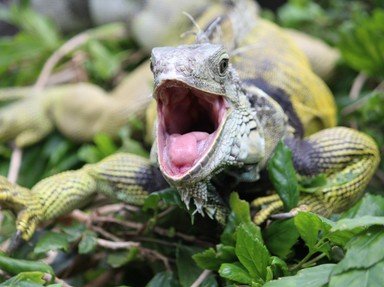Quiz Answer Key and Fun Facts
1. How does the coast horn lizard (Phrynosoma coronatum) defend itself against predators?
2. The queen parrotfish (Scarus vetula) secretes mucus before going to sleep. What's the protective use of this behaviour?
3. How does the bombardier beetle (Brachininae) defend itself when it feels threatened by predators?
4. What is the defense strategy of the hairy frog (Trichobatrachus robustus), also known as the horror frog or wolverine frog?
5. What is the unique self-defense behaviour of the pistol shrimp (Alpheidae)?
6. What is the primary self-defense strategy of the pufferfish (Tetraodontidae) when it feels threatened by predators?
7. The hagfish (Myxini) has a unique strategy tp defend itself from predators in the deep ocean. How does it work?
8. What is the unusual self-defense mechanism of the velvet worm (Udeonychophora)?
9. Which animal uses its sharp quills as a self-defense mechanism when threatened?
10. What is the extraordinary self-defense tactic of the mimic octopus (Thaumoctopus mimicus), found in the waters of Southeast Asia?
Source: Author
wellenbrecher
This quiz was reviewed by FunTrivia editor
rossian before going online.
Any errors found in FunTrivia content are routinely corrected through our feedback system.

